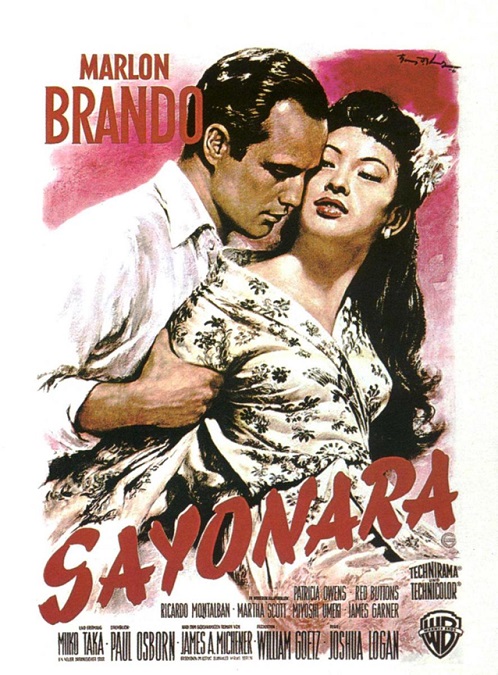
Sayonara – 1957
I really enjoyed this film. It had some incredible acting, a great plot that dealt very strongly with racism and prejudice, beautiful cinematography, and fantastic and poignant drama. This one really delivered. Where to begin?
The movie starred Marlon Brando, Red Buttons, James Garner, Miiko Taka, and Miyoshi Umeki. Ricardo Montalban and Patricia Owens rounded out the supporting cast. The acting was top-notch. I have never been a huge Brando fan, but every movie review I read, every film historian who has an opinion, keeps going on and on about how much of a wonderful actor he is. Finally, I’m starting to see why. There is an honesty and an ease in his delivery that is uniquely his own. I was really impressed with him.
He played Air Force Pilot Lloyd “Ace” Gruver, stationed in Tokyo during the Korean War. He starts out as the Air Force poster boy, and has no problem toting the company line which discourages American soldiers from fraternizing with Japanese women. When one of the men under his command wants to marry one, he initially tries to talk him out of it.
But Airman Joe Kelly, fantastically played by Red Buttons, is truly in love with his intended bride, Katsumi, played by Umeki. In fact, Kelly convinces Ace to be the best man at the wedding. Then, Ace, himself falls in love with a Japanese woman named Hana-ogi, played by Taka. And therein lies the film’s drama. It is an examination of extreme prejudice and discrimination. The military goes to extraordinary lengths to keep American men from associating with Japanese women.
Sure, the plot mostly focuses on Ace and Hana-ogi, but for me, the real drama of the film came from Joe and Katsumi. The four friends go to see a play that tells the tale of two lovers who, when they are pulled apart, commit double suicide so that their spirits can be together forever. Lt. Gen. Mark Webster, played by Kent Smith, tells Joe that he is being reassigned to the United States, and that the U.S. does not recognize his marriage. He will be forcibly parted from his pregnant wife. The couple follow the example of the lovers in the play and commit suicide together.
I’m only used to seeing Red Buttons in comedic roles, but he turned in a fantastic performance. The actress who played his wife, Umeki, was incredibly good as well. I became emotionally invested in their story and wanted them to be together. They both did such a good job that they each won an Academy Award for Best Supporting Actor and Best Supporting Actress, respectively. Incidentally, Umeki is the only Asian woman to win an Academy Award for acting.
Another reason I really enjoyed this film was the cinematography. Japan is a beautiful country with a rich culture, full of ancient and time honored traditions. The filmmakers took full advantage of the serene and yet spectacular locations. The costumes were also wonderfully done and fascinating to see on the screen. I especially liked the scenes that showed Kabuki theatre, an all-male style of theatre, and the fictional Matsubashi theatre, an all-female theatre company, though such a company called the Takarazuka Theatre Company, actually does exist.
However, in my research, I found that there were some critics of the film who claimed that the film was “… one in a long list stereotyping Asian American women as ‘lotus-blossom, geisha girl, china doll, or Suzie Wong’ by presenting Asian women as ‘passive, sexually compliant, and easy to seduce’ or as downright prostitutes.” I find this to be a ridiculous claim because the movie was not presenting Asian American women at all. The characters portrayed in Sayonara were Japanese women who belonged to a very particular subculture within Japanese society. I have seen a documentary or two that confirms the fact that the characters were played very true to life.
I was quite pleasantly surprised by this wonderful movie and I thought that Buttons and Umeki really deserved the awards they were given. Brando was also nominated for Best Actor, though he lost the honor to Alec Guinness in The Bridge on the River Kwai. That one must have been a pretty close race, but I think the Academy made the right decision. Sorry Marlon.

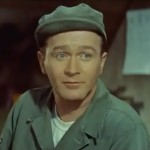

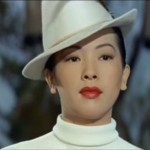
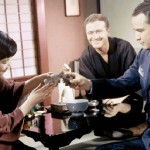
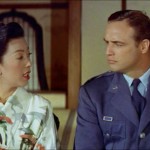
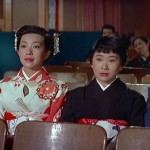
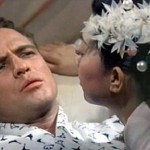
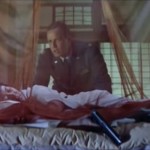
un peliculón , Brando y M.Taka , geniales, la actriz de una belleza pocas veces vista, creo que me enamoré de ella a los 14 años , ahora que tengo 75, sigo enamorado, BRANDO, un monstruo, lo peor de la película , el doblaje .Está en Filmin, con color espectacular y la he visto 14 veces…
Translation:
a hair, Brando and M.Taka, great, the actress of a rarely seen beauty, I think I fell in love with her at 14, now that I am 75, I am still in love, BRANDO, a monster, the worst of the film, dubbing. It is in Filmin, with spectacular color and I have seen it 14 times…